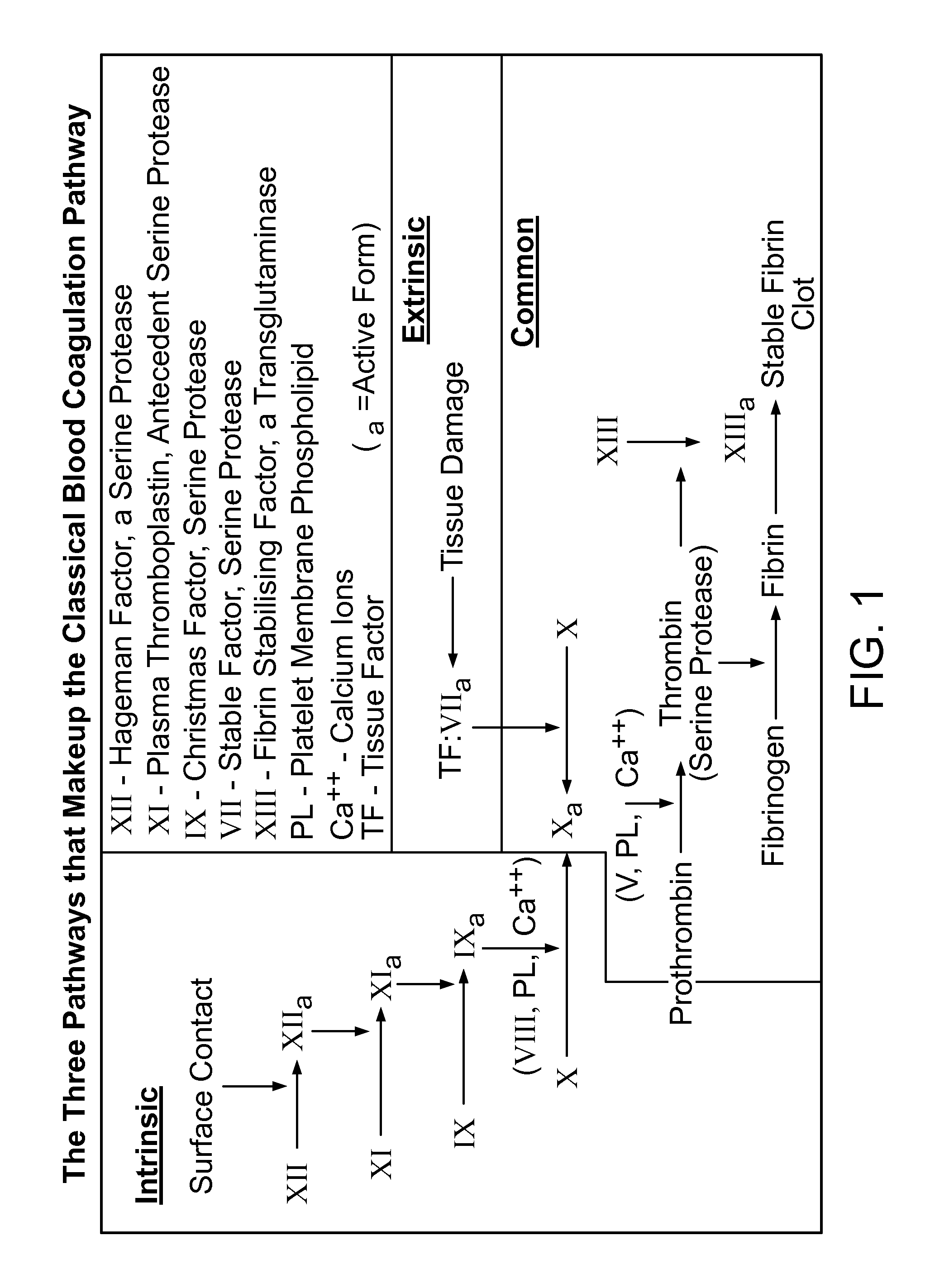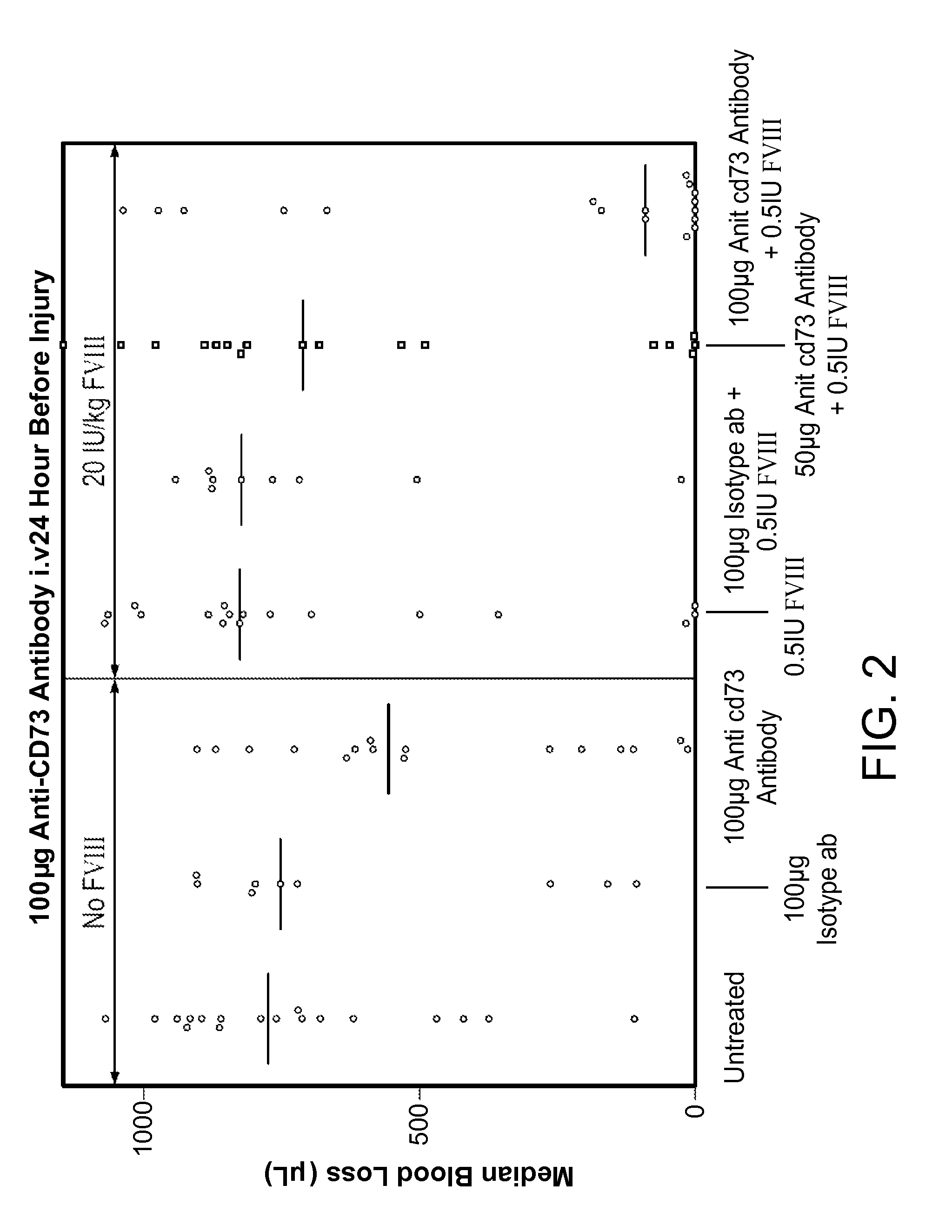Methods for treating bleeding disorders
a bleeding disorder and hemostasis technology, applied in the field of bleeding disorders, can solve the problems of severe blood loss, achieve the effects of reducing adenosine, reducing bleeding, and reducing bleeding,
- Summary
- Abstract
- Description
- Claims
- Application Information
AI Technical Summary
Benefits of technology
Problems solved by technology
Method used
Image
Examples
example
[0061]In this Example, the effect of administering anti-CD73 monoclonal antibodies on reduction in blood loss in mice with Hemophilia A mice was analyzed.
[0062]Male Hemophilia A mice, approximately eight to nine weeks of age and weighing, on average, approximately 25 grams, were used in this Example. The mice were anesthetized with isoflurane and the tails were placed in approximately 37-38° C. warmed 15-ml plastic tubes including 0.9% (by weight) saline for 10 minutes. The tails were then cut at 4 mm from the tip by scalpel and immediately placed back into separate pre-warmed (37-38° C.) 15-ml plastic tubes containing 10 ml of 0.9% (by weight) saline. Each mouse was allowed to bleed freely for 40 minutes.
[0063]Twenty-four hours prior to the tail cut, each mouse having Hemophilia A was injected, via tail injection, with one of the following: 4 mg / kg (100 μg) isotype antibody (9 mice), 4 mg / kg (100 μg) of anti-CD73 monoclonal antibody (clone TY / 23, BD PHARMINGEN, San Jose, Calif.) (1...
PUM
| Property | Measurement | Unit |
|---|---|---|
| bleeding time | aaaaa | aaaaa |
| molecular weight | aaaaa | aaaaa |
| surface coagulation | aaaaa | aaaaa |
Abstract
Description
Claims
Application Information
 Login to View More
Login to View More - R&D
- Intellectual Property
- Life Sciences
- Materials
- Tech Scout
- Unparalleled Data Quality
- Higher Quality Content
- 60% Fewer Hallucinations
Browse by: Latest US Patents, China's latest patents, Technical Efficacy Thesaurus, Application Domain, Technology Topic, Popular Technical Reports.
© 2025 PatSnap. All rights reserved.Legal|Privacy policy|Modern Slavery Act Transparency Statement|Sitemap|About US| Contact US: help@patsnap.com


